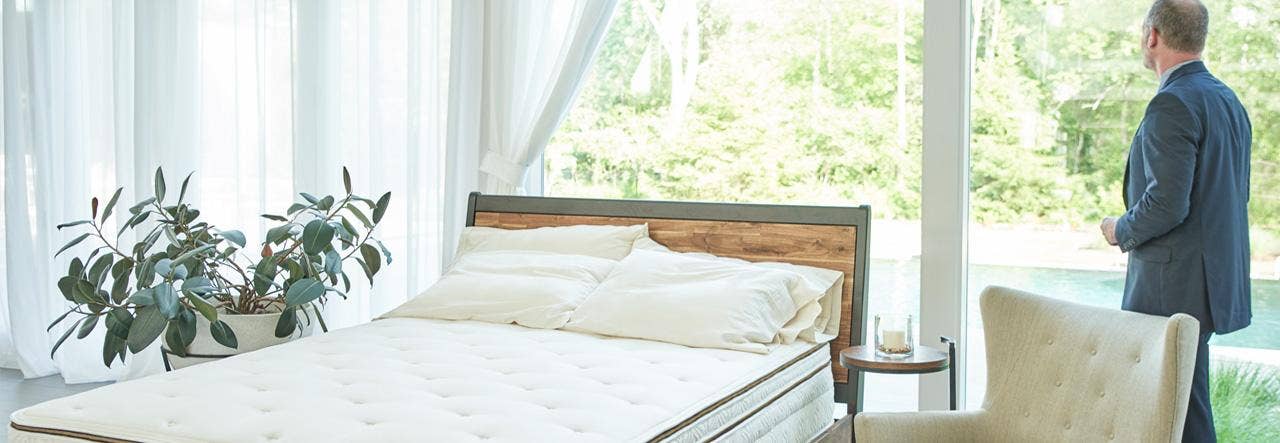This week kicks off Air Quality Awareness Week and May’s Clean Air Month, the Environmental Protection Agency’s (EPA) month-long celebration of the progress made in improving air quality over the last 50 years.
Did you know that the five most widespread and problematic air quality concerns in the U.S. are all indoor air problems? In the last few years, a growing body of scientific evidence has indicated that the air in our homes is even more polluted than the air outside.
The problem with VOCs
Common residential air pollutants range from excessive moisture and dust particles to bacteria and volatile organic compounds (VOCs), all of which are known to disturb human health. The good news is, there are ways to make informed choices about the risks we may want to avoid—like our exposure to VOCs.
VOCs are found in many common household products including paints, new furniture, cleaning products, and even mattresses.
VOC inhalation can lead to a variety of symptoms such as headaches, difficulty breathing, and dizziness, to name a few. In the worst-case scenario, some VOCs, like formaldehyde, are also suspected or known carcinogens.
“Keeping the level of volatile organic compounds in your home to the bare minimum is very important to achieving the best indoor air quality possible,” comments Barry A. Cik, BCEE, Technical Director and Founder of Naturepedic.
VOCs are certainly not the only source of toxins impacting health, however. Perhaps surprisingly, conventional mattresses are a major contributor to indoor air pollution. This is because many mattresses today are made with questionable chemicals and materials that not only negatively affect air quality, but also the health of the person inhaling them.
The truth is that that "new mattress smell" is actually a release of these chemicals, known as off-gassing.
“While these levels may decrease over time, exposure to VOCs can be avoided by selecting mattresses and bedding that utilize certified organic cotton, wool, and latex materials. Additionally, checking if a product is GREENGUARD Gold certified will indicate that it has low to zero chemical emissions,” Cik adds.
How body temperature affects off-gassing
Recent studies have also shown that body heat can contribute to increased VOC emissions in mattresses when sleeping. This, according to Cik, highlights why body temperature regulation is so important for optimal sleep health.
Since many conventional mattresses are made with foam, this could have a negative effect on a person’s temperature while sleeping.
“Polyurethane foam (certainly including memory foam) is made from petroleum, which doesn't breathe and can make you feel hot and sweaty at night,” adds Cik. “Adding cooling gels, as many brands do, only brings more questionable chemicals into the mix.”
This is why choosing bedding that’s made with natural, organic cotton fabric and fill and other temperature-regulating materials, like wool to wick away moisture, is the easiest way to transform your sleep environment from hot to comfortable. And not only that, but you’ll significantly reduce the number of toxins being released into your home’s air, which could aid in boosting health.
“What we breathe in matters,” states Cik. “The good news is that consumers have a great opportunity to improve their air quality not only by improving ventilation, but by eliminating sources of chemical exposure in the home.”
Breathe easy, here’s our promise
At Naturepedic, we believe in the importance of indoor air quality, and to help promote this, we make sure to never use vinyl, PFCs, flame retardant chemicals and barriers, polyurethane foam, formaldehyde, pesticides, GMO’s, glues/adhesives, or any other questionable chemicals and materials that can be released into the environment in our products.
By meeting the highest certifications in the industry (including GOTS-certified organic, MADE SAFE® certified, and GREENGUARD Gold and UL Formaldehyde-Free), we understand that when it comes to health and sleep quality, there really is no room for compromise.
Browse our safer, healthier mattress collections for baby, kids and adults.
Interested in learning more about indoor air pollutants throught your home? Here's a resource you may find helpful.
 BABY
BABY  KIDS
KIDS  ADULT
ADULT  LEARN
LEARN  STORES
STORES 